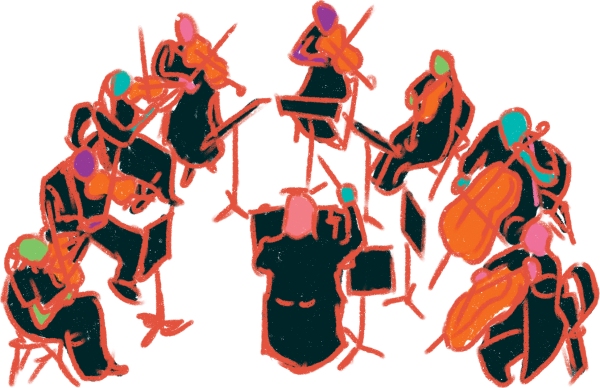Shopping Nifty and Thrifty
Behind the scenes at a thrift store
December 19, 2022
According to austintexas.gov, there are nearly four dozen thrift stores located in the Austin area. These stores include Goodwill, Pavement, Room Service Vintage, Austin Pets Alive! (APA!) Thrift, and many more.
APA! is a no-kill pet shelter in Austin, and the proceeds from their thrift shop go to fund the shelter. APA! Thrift Retail Operations Derrick Ernst said that there are many reasons that make running a thrift shop different from running a regular store. Thrift stores provide an opportunity to support charities like APA! in an alternate way while purchasing well priced clothes. Instead of using planograms, or diagrams that show how products are placed on shelves, to maximize sales, each thrift store has a different organization method. Along with dividing clothes based on size, APA! Thrift additionally divides clothes based on ‘boutique’ and regular clothing which dictates how items are priced.
“Everything that’s in the thrift store is 100% donated,” Ernst said. “There’s no blank, no planograms because we never know what we’re gonna get,” Ernst said. “We have two prices of clothing. We have what we call boutique clothing, which are items that are a little bit higher price because the brands are a lot nicer, and then we have regular clothing, which is basically like five to seven dollar pieces of clothing.”
According to Ernst, women’s clothing is the biggest seller at thrift stores. More unique items, like vintage pieces no longer in production, are also big sellers.
“[The biggest sellers are] mostly boutique and vintage clothing because they think it’s a great deal,” Ernst said. “Some of these items in a department store may run 50 to 100 dollars, but you can get it here for 15 or 20 dollars.”
Fashion Design teacher Jessica Fisher is an avid thrifter and fan of vintage clothing. She is particularly fond of 50s inspired fashion or vibrant clothes.
“Almost all of my wardrobe is thrifted,” Fisher said. “I have a load of 1950’s fashion, so I gravitate towards pieces that give me some kind of a vibe like that. But really just any pieces that have great color and patterns. Something that looks like it’s still in good condition and would also last a while.”
Sophomore Ivy Sernovitz also enjoys thrifting and hunting through the variety of clothing. She said that there are some trends that are seen across different stores.
“There’s usually a lot of T-shirts,” Sernovitz said. “But a lot of times there’s like really random stuff, like there’ll be a T-shirt for an elementary school’s Christmas party or something. There’s usually a lot of jeans. It’s a little bit of everything.”
Much of the appeal for thrifting comes from the variety of clothing, according to Sernovitz. Because everything at thrift stores is donated, they will often end up with a large array of items.
“It’s just fun because you actually have to do a little bit more searching,” Sernovitz said. “And you find some really interesting things that you might not find elsewhere.”
According to Fisher, thrifting also has environmental benefits. She says with the current push for sustainability, thrifting may be a better solution to traditional methods of buying clothes.
“It’s good for the environment to not be picking clothes, like fast fashion, buying it, wearing it once, and then throwing it away, and it building up in the landfills,” Fisher said.
Sernovitz agreed about the benefits of thrifting and upcycling old clothes. Clothing production and the fashion industry as a whole are currently responsible for 10% of carbon emissions, according to Business Insider. Buying second hand clothes keeps new ones from having to be produced, lowering carbon emissions.
“It’s better for the environment than buying new clothes,” Sernovitz said, “and it’s giving clothes that someone might throw away a new home.”
Thrifting is becoming increasingly popular as shown by the market growth of 15% in 2021 and 82% of Americans either buying or selling clothes at second hand stores, according to OfferUp, an online marketplace. Fisher said that this is a trend that she hopes will continue.
“I think that a lot of people should go thrifting,” Fisher said, “and I hope that more people will start to.”





